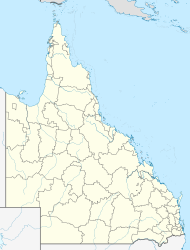
Kingaroy is a rural town and locality in the South Burnett Region, Queensland, Australia. The town is situated on the junction of the D'Aguilar and the Bunya Highways, 218 kilometres (135 mi) north-west of the state capital Brisbane and 141 kilometres (88 mi) south west of Gympie. In the 2021 census, the locality of Kingaroy had a population of 10,266 people.

Eidsvold is a rural town and locality in the North Burnett Region, Queensland, Australia. The town is the self-proclaimed Beef Capital of the Burnett and is a hub for the regional cattle industry. In the 2021 census, the locality of Eidsvold had a population of 538 people.

The Shire of Wondai was a local government area located in the South Burnett region of Queensland, Australia, about 140 kilometres (87 mi) northwest of the capital, Brisbane. The shire covered an area of 3,577.6 square kilometres (1,381.3 sq mi), and existed as a local government entity from 1910 until 2008, when it amalgamated with several other councils in the South Burnett area to form the South Burnett Region.
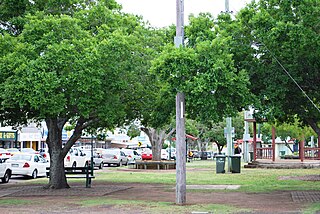
Murgon is a rural town and locality in the South Burnett Region, Queensland, Australia. In the 2021 census, the locality of Murgon had a population of 2,220 people.
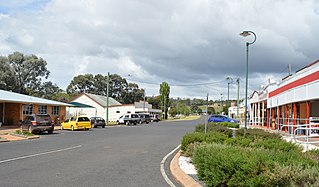
Proston is a rural town and locality in the South Burnett Region, Queensland, Australia.

Goomeri is a rural town and locality in the Gympie Region, Queensland, Australia. In the 2021 census, the locality of Goomeri had a population of 677 people.
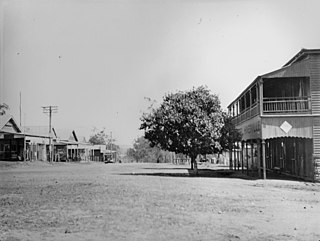
Hivesville is a rural town and locality in the South Burnett Region, Queensland, Australia. In the 2021 census, the locality of Hivesville had a population of 173 people.
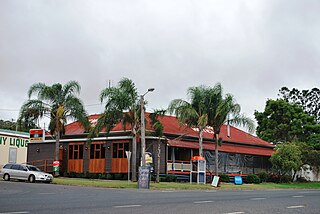
Tingoora is a rural town and a locality in the South Burnett Region, Queensland, Australia.

Wooroolin is a rural town and a locality in the South Burnett Region, Queensland, Australia.

Kumbia is a rural town and locality in the South Burnett Region, Queensland, Australia. In the 2021 census, the locality of Kumbia had a population of 301 people.

Durong is a rural locality in the South Burnett Region, Queensland, Australia. In the 2021 census, Durong had a population of 219 people.
Okeden is a rural locality in the South Burnett Region, Queensland, Australia. In the 2021 census, Okeden had a population of 53 people.
Cloyna is a rural locality in the South Burnett Region, Queensland, Australia. In the 2021 census, Cloyna had a population of 160 people.
Chelmsford is a rural locality in the South Burnett Region, Queensland, Australia. In the 2021 census, Chelmsford had a population of 100 people.
Cushnie is a rural locality in the South Burnett Region, Queensland, Australia. In the 2021 census, Cushnie had a population of 145 people.
Keysland is a rural locality in the South Burnett Region, Queensland, Australia. In the 2021 census, Keysland had a population of 19 people.
Leafdale is a rural locality in the South Burnett Region, Queensland, Australia. In the 2021 census, Leafdale had a population of 12 people.

Mondure is a rural town and locality in the South Burnett Region, Queensland, Australia. In the 2021 census, the locality of Mondure had a population of 102 people.
Stalworth is a rural locality in the South Burnett Region, Queensland, Australia. In the 2021 census, Stalworth had a population of 37 people.
Mundubbera–Durong Road is a continuous 105-kilometre (65 mi) road route in the North Burnett and South Burnett local government areas of Queensland, Australia. It is signed as State Route 75. It is a state-controlled regional road. It has been designated as a road of strategic importance by the Federal Government.

